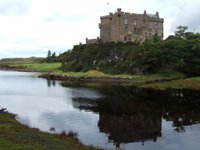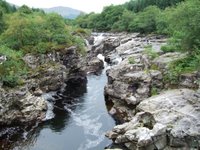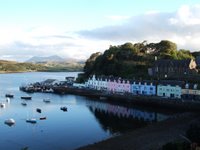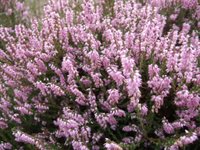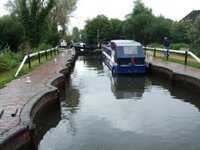 The early morning rain cleared for us to enjoy a walk around Inveraray. First stop was the jail to tour the cells, read the histories of various prisoners and learn about their punishments. We met a jailor and the warden’s wife, both dressed for their parts.
The early morning rain cleared for us to enjoy a walk around Inveraray. First stop was the jail to tour the cells, read the histories of various prisoners and learn about their punishments. We met a jailor and the warden’s wife, both dressed for their parts.  The best part was the Courtroom all set up with models of the judge, lawyers, and interested townsfolk.
The best part was the Courtroom all set up with models of the judge, lawyers, and interested townsfolk. Then, surprisingly, we visited the Castle: home of the Campbells, and much more elaborate than Dunvegan.
Then, surprisingly, we visited the Castle: home of the Campbells, and much more elaborate than Dunvegan.All in all, the package deal of castle, jail and town was most worthwhile and we recommend a visit.
 As we were so close to it, we detoured to Loch Lomond and had a very pleasant morning tea break on the "bonnie bonnie banks".
As we were so close to it, we detoured to Loch Lomond and had a very pleasant morning tea break on the "bonnie bonnie banks".We then visited the Bonawe Iron Furnace, located here because of the plentiful supply of wood for fuel for the smelting.
The next stop was Dunstaffnage Castle. By then the rain had made the day less pleasant, so we had a very quick look as the castle is virtually a ruin.
As we proceeded north towards Inverness, the day improved.
 By the time we reached Urquhart Castle on the banks of Loch Ness the sun had come out, and we enjoyed this beautiful spot.
By the time we reached Urquhart Castle on the banks of Loch Ness the sun had come out, and we enjoyed this beautiful spot.The final stop for the day, was an amazing dinner at Oakwood Antiques, a restaurant/shop between Loch Ness and Inverness, probably the gastronomic highlight of our Scottish tour.
